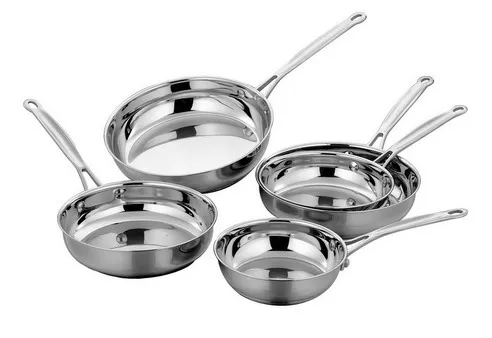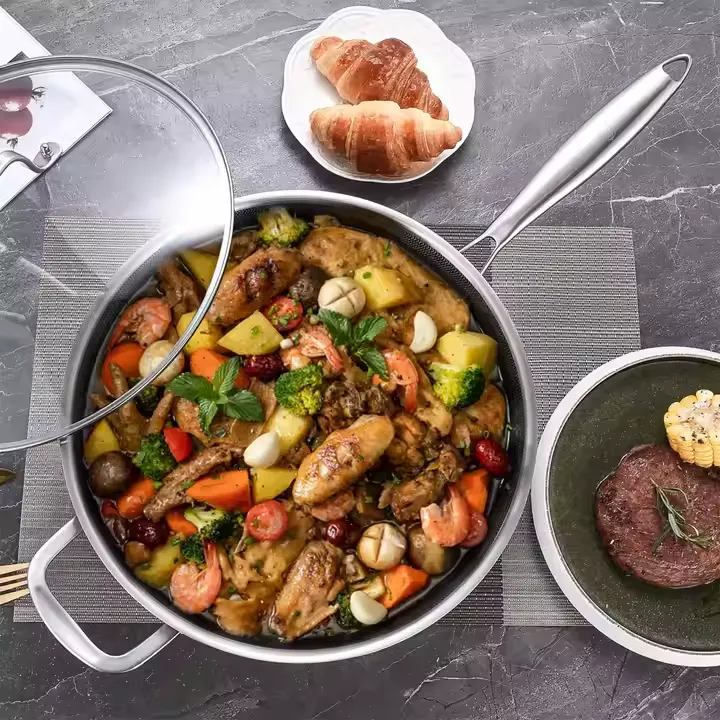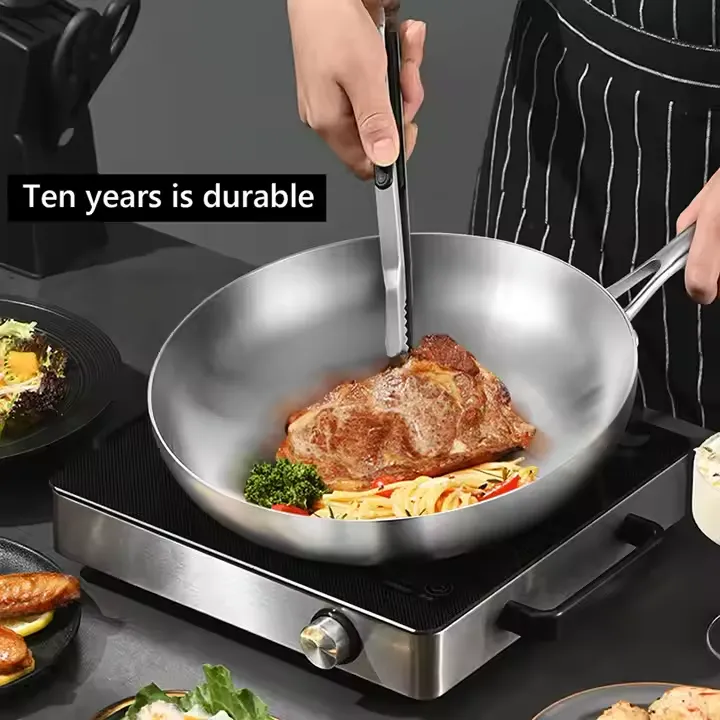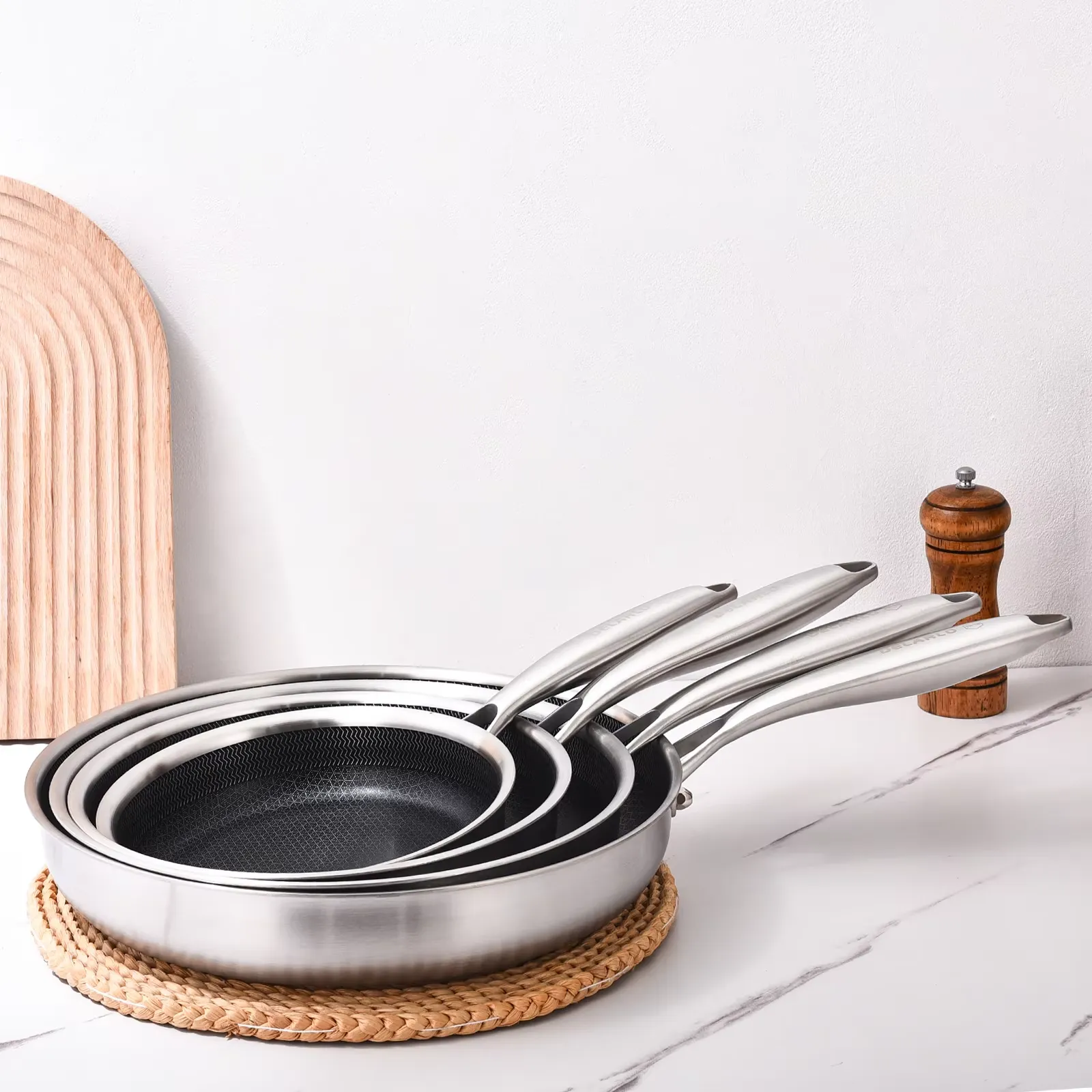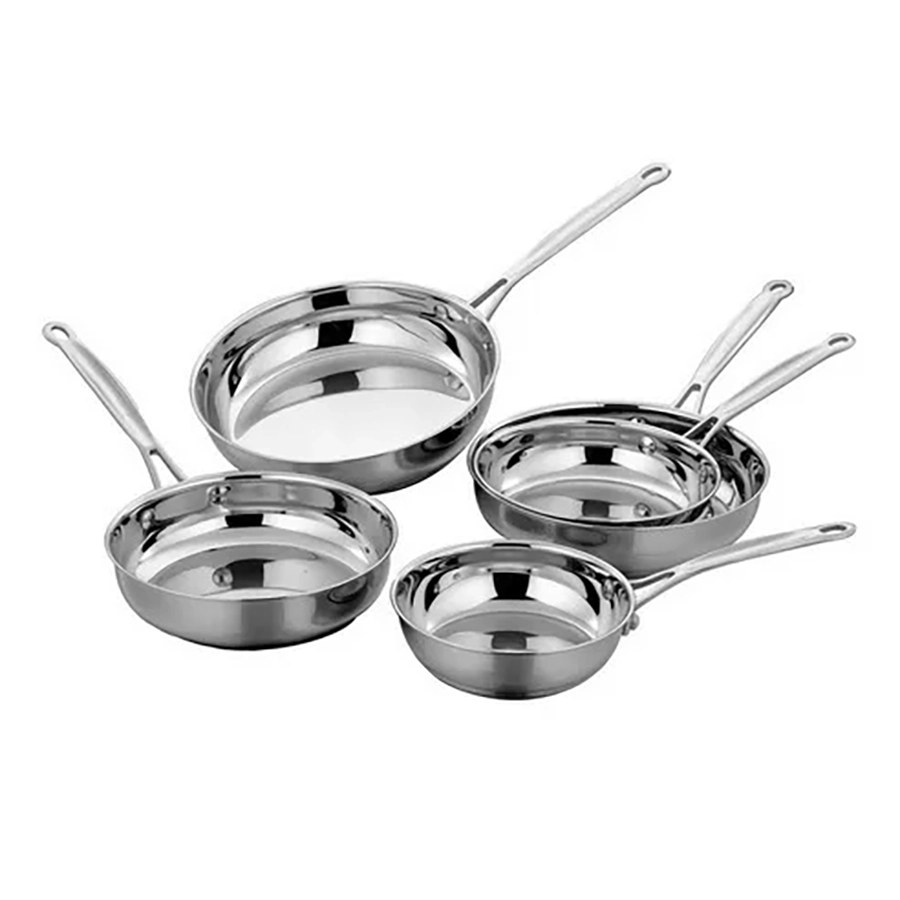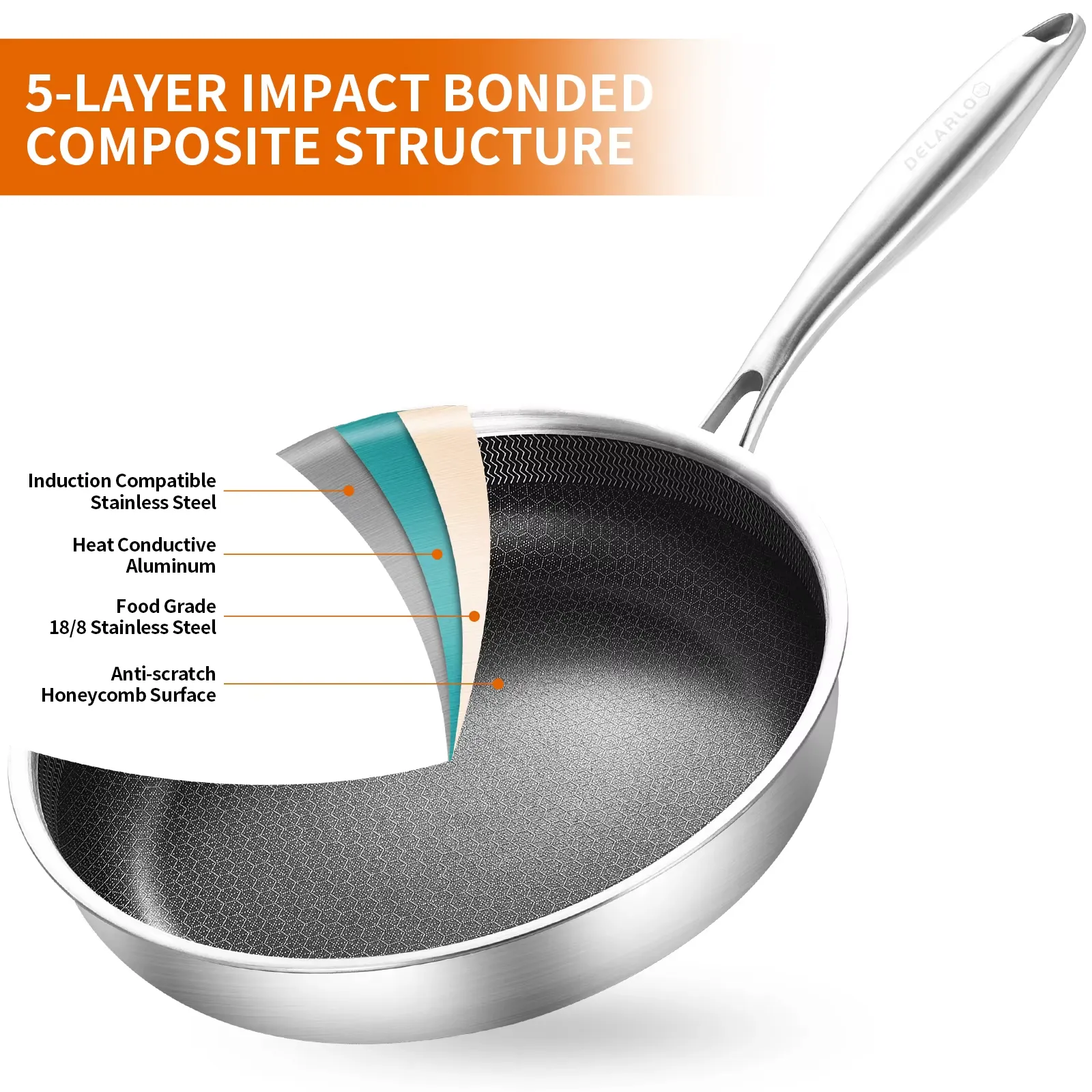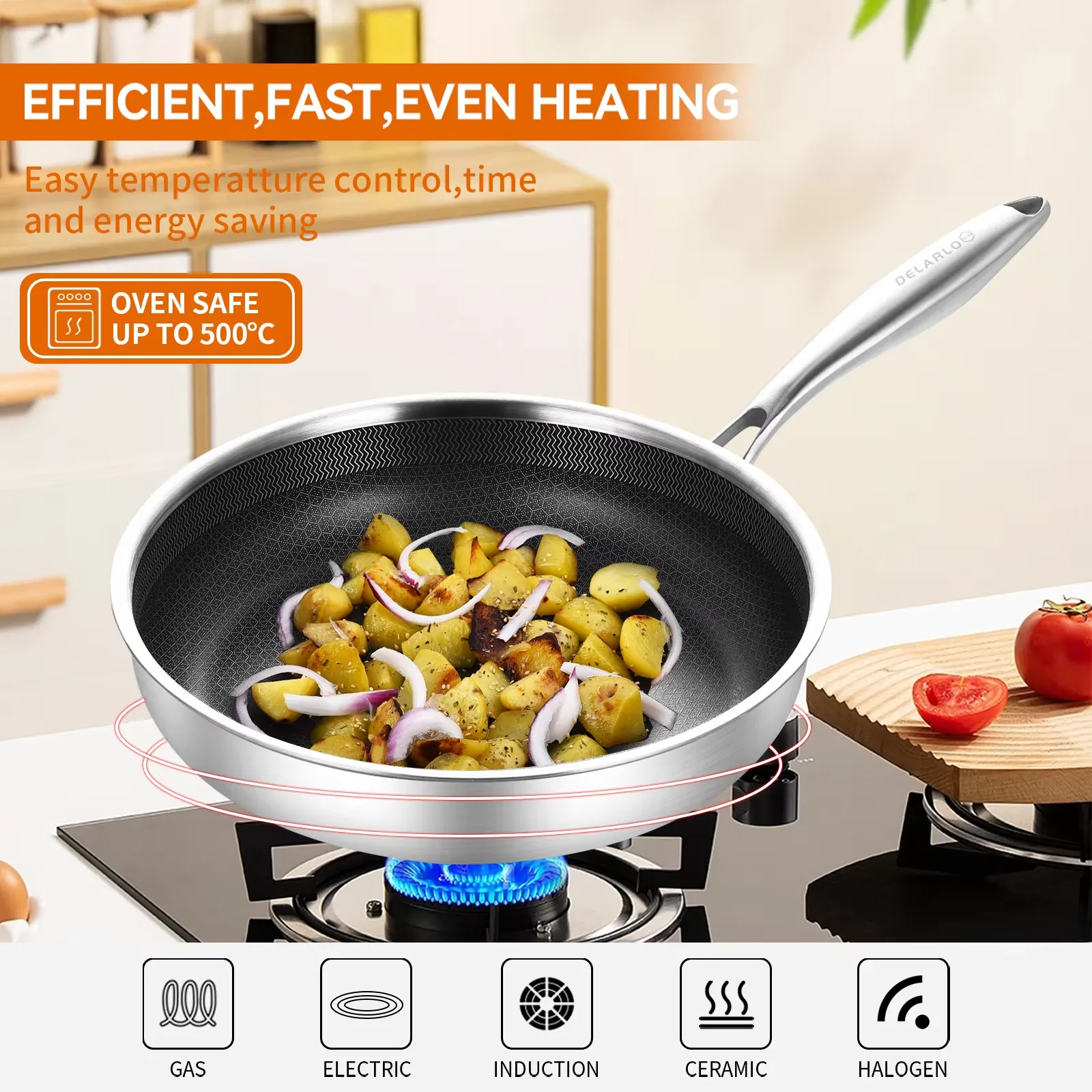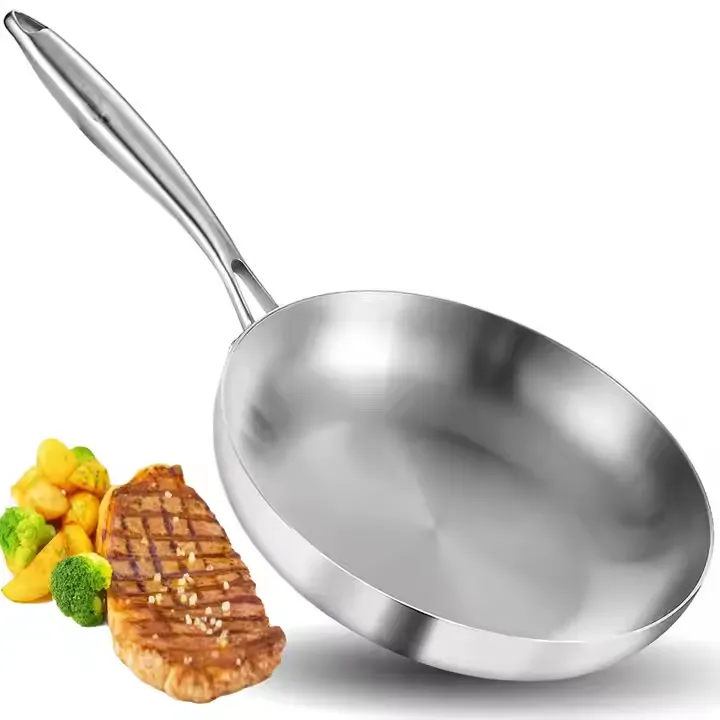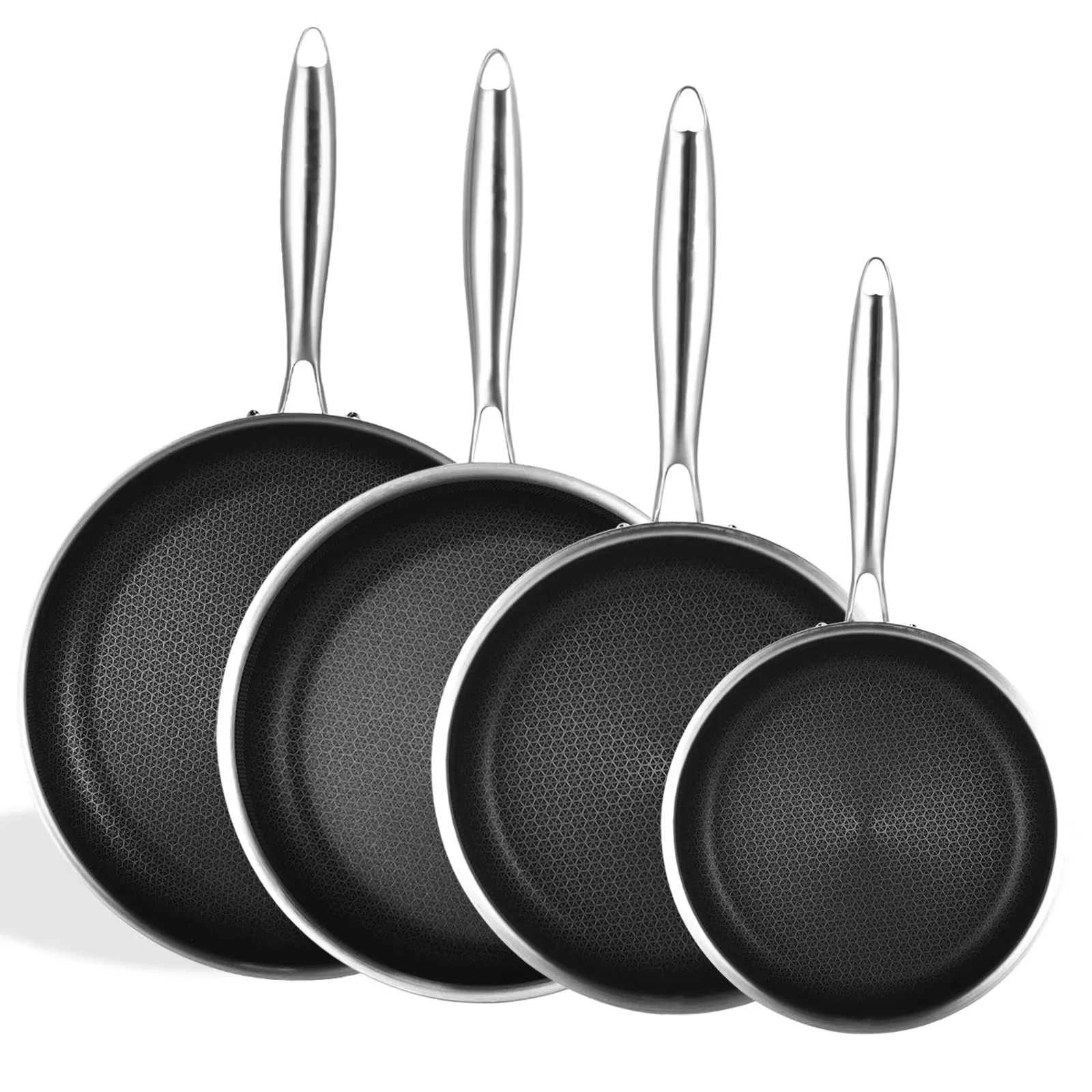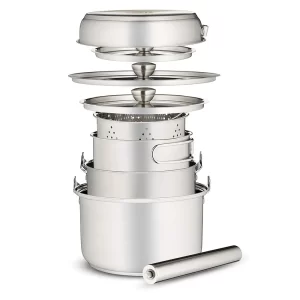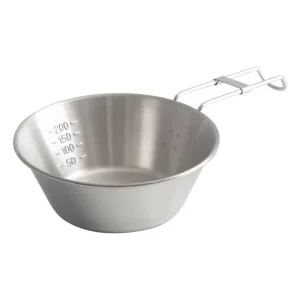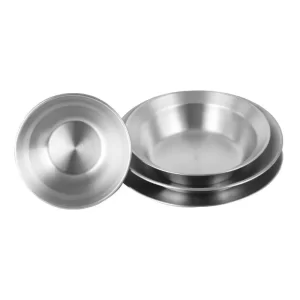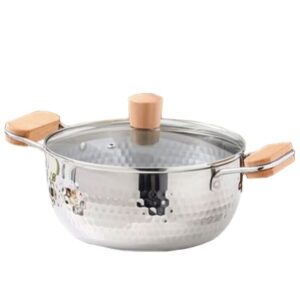Getting the right frying pan can make a difference in your cooking, making it more pleasurable and much easier. Whether a professional chef or a home cook, using the right equipment for the job is important. Read on as this blog post acquaints you with the different cookware pan types and their various benefits, and places special emphasis on stainless steel frying pans. In the following paper, after reading you will know just the right frying pan for your cooking style and preference, and if you need to shop around, by all means, ask Chancescook!
Contenu
ToggleDifferent Types of Frying Pans
Frying pans are one of the most common cookware we use in the kitchen daily, and they are generally suitable for cooking food by frying, sautéing, and stir-frying, among other methods. They are generally designed with a long handle and have a flat, wide bottom for easy turning of food.
Users can learn about the different types of frying pans so that they can choose the one of their choice, and if they don’t know where to start, they can take a look at Chancescook’s cookware! Each frying pan possesses features, benefits, and drawbacks. Three common types of skillets include cast iron skillets, nonstick skillets, and stainless steel skillets. We can learn more about the differences between them so that we can better choose the right cookware for ourselves!
Cast Iron Pan
Cast iron skillets are durable and hold heat well. It maintains a stable temperature even at high temperatures, making it ideal for slow cooking and grilling. But this type of pan is heavy and requires regular care and maintenance to achieve non-stick results and avoid rusting.
Non-stick Pan
Non-stick pans have a coated surface that won’t stick to food when heated. Not only is it very easy to clean, but it is also suitable for cooking light foods such as eggs or fish. However, this coating can come off over time and is not suitable for high-temperature cooking.
Stainless Steel Frying Pan
Stainless steel pans are used by professional and home cooks alike due to their combination of strength, heat conductivity, and versatility. Stainless steel pans can withstand extremely high temperatures better than non-stick pans for grilling, sautéing, and deglazing; they are also lighter than cast iron pans and relatively easy to maintain.
Stainless Steel Frying Pans: Benefits
Stainless steel frying pans are armed with numerous advantages, which make them quite handy and helpful for professional chefs and home cooks alike. This pan, in terms of durability and heat control, has gained a reputation among many as an important utensil in the kitchen. Below are some of the main advantages of stainless steel frying pans:
- Durability and Long Life
Stainless steel pans are extremely durable. Unlike non-stick or cast iron pans, they don’t need any special seasoning or protective coating to keep them performing well. Stainless steel is resistant to corrosion, rust, and staining, which means it can last a long time.
- Heat Distribution and Control
Stainless steel skillet heat distribution is even for cooking activities such as browning meat or stir-frying vegetables, not only to ensure that the material is evenly cooked to avoid hot spots but also resistant to high temperatures, providing the chef more control over the cooking technique.
- Versatility in Cooking
Stainless steel pans are versatile enough to meet your cooking needs, from frying eggs to grilling steaks and simmering sauces to oven baking. Unlike non-stick pans, stainless steel pans are oven-safe, and whether you use them on the stovetop or in the oven, stainless steel pans offer a more versatile cooking experience!
- Non-reactive Surface
Another important reason is that stainless steel is non-reactive; it will not react with highly acidic or alkaline foods. This can sometimes make all the difference in maintaining flavors and quality in dishes, especially considering how many recipes feature ingredients such as tomatoes, citrus, or vinegar-based sauces.
All in all, stainless steel frying pans are an excellent combination: sturdy, versatile, and a way to achieve precision cooking. Whether you’re a professional chef or a home cook, a skillet can elevate your cooking, and ustensiles de cuisine en acier inoxydable de Chancescook is top-notch for your needs!
How to Choose the Best Frying Pan: Tips
- Consider Your Style of Cooking
Another very important factor that may influence your choice of pan is your most frequent kind of cooking. If you conduct a lot of high-temperature cooking, like searing steaks or stir-frying, for example, then it would be preferable if a stainless steel frying pan could keep up with such very high temperatures without wear. In case you like cooking with materials considered delicate, like fish or eggs, a non-stick pan may be the best option.
- Material and Heat Conduction
The frying pan performance will be according to its material. The stainless steel pans distribute the heat uniformly and can meet the needs of frying and grilling, for example. Non-stick pans do well when the temperatures are low to medium, but they do not resist high temperatures, while cast iron can be suitable for dishes that take a longer cooking time, so they can retain heat well.
- Maintenance and Durability
Your decision should also be informed by the level of maintenance you are willing to commit to. Stainless steel frying pans require very minimal upkeep, while cast iron needs regular seasoning to maintain the non-stick surface. Non-stick frying pans are pretty sensitive and need careful handling; you should never scratch the coating, which degrades over time.
- Quality vs. Budget
Admittedly, this may be the cheapest skillet, but spending money on a good pan is all about economizing in the long run. Generally speaking, stainless steel skillets are a little more expensive; with their longer life span and better performance, they are really cost-effective. Non-stick pans are cheaper but perhaps are replaced often. Consider your budget, and how often the pan is going to be used when you do make your decision.
Conclusion
Your best frying pan will depend a great deal on your cooking habits and personal preferences regarding maintenance. Each variety of frying pan, including cast iron, non-stick, and stainless steel, has its strengths suited to different cooking styles.
The best frying pan is the one that meets your specific cooking needs, lifestyle, and budget. Stainless steel skillets have proven time and time again to be the most reliable choice when it comes to versatility, durability, and superior performance. If interested in purchasing a skillet, feel free to ask Chancescook!
Demande de devis gratuit
Si vous souhaitez obtenir plus d'informations sur nos articles de cuisine en gros, n'hésitez pas à nous contacter !
N'hésitez pas à nous appeler
N'hésitez pas à nous contacter
Caitang Town Hongqi Village After The Foot Of The Rain Pavilion, Chaozhou, Guangdong, Chine

